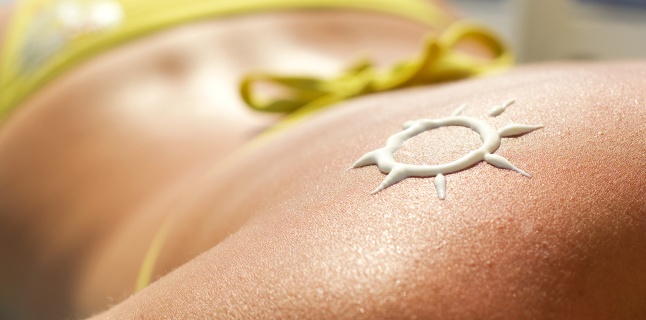How is sun allergy?

Photodermatitis is a skin inflammation that occurs in people with sensitive skin as a result of the exaggerated reaction of the immune system to contact with (UV). Basically, it is an abnormal reaction of the skin in contact with sunlight. • Pruritic rash on the exposed areas: neck, neck, arms, legs, feet • certain eczema • redness accompanied by pain • vesicles. Most exposed to the unpleasant effects of UV radiation are people with light skin, blond or red hair and those with blue or green eyes. The diagnosis is only established by the dermatologist specialist following specific tests such as photo-patch test, photobiological exploration, blood tests and skin tests. Avoid sudden exposure to the sun without having to.
The best are 50+ factor photoprotective creams. It is also indicated, ie the gradual use of the skin with UV radiation. Some ointments or mixtures based on corticosteroids will be applied, but only at the recommendation of the dermatologist. Mentholated talc powder can also be used successfully, which has a calming effect. Perhaps the most common form of sun allergy is the polymorphic rash in the light, which usually occurs with the first sun exposure in the year.
Most of the time, it will fade later, once the skin gets used to UV radiation. Signs and symptoms that may appear are redness, rash, and usually occur in exposed areas of the photo-exposed areas, after hours of exposure to the sun. As a rule, the eruption is in the form of papules or bumps, and some people may even experience large headaches and sensations. The best way to prevent these troubles is to avoid exposure to the sun for a long time, especially between 10:00 and 17:00. At the same time, it is essential to apply the photoprotective cream and re-apply it every two hours in case of prolonged exposure to the sun, or even more often if the person swallows or if he or she sweats abundantly.
It most often affects women aged between 20 and 40 and is manifested by rash that resembles the irritation caused by nettles. The lesions appear immediately after, but disappear within two hours if the person is in the shade. Allergic reaction occurs in areas not covered by clothing. Because lesions disappear with the person's state in the shade, treatment is not necessary. If urticaria continues to recur at the next sun exposure, the dermatologist will recommend an oral antihistamine.
Source : sfatulmedicului.ro
Views : 3200
Popular Article
- (photo) Nude becomes art.
Posted: 2018-03-17, 9589 views.
- The harmful effects of air conditioning on the skin
Posted: 2017-06-08, 8268 views.
- 3 causes of dyed hair discoloration
Posted: 2017-06-15, 8142 views.
- Why early puberty occurs in girls: symptoms, favors, diagnosis and treatment
Posted: 2017-10-24, 7997 views.
- Good or bad skin treatments in the hot season
Posted: 2017-06-07, 7737 views.
Recommendations
- (photo) Nude becomes art.
Posted: 2018-03-17, 9589 views.
- The harmful effects of air conditioning on the skin
Posted: 2017-06-08, 8268 views.
- 3 causes of dyed hair discoloration
Posted: 2017-06-15, 8142 views.
- Good or bad skin treatments in the hot season
Posted: 2017-06-07, 7737 views.
- Risks of practicing sports on hot days
Posted: 2017-06-12, 7330 views.
 4 effective ingredients in the fight against acne.
4 effective ingredients in the fight against acne. How to get rid of hiccups fast
How to get rid of hiccups fast The wheat bran diet: the secret of lost pounds as if by magic
The wheat bran diet: the secret of lost pounds as if by magic The recipe that will sweeten your soul this weekend!
The recipe that will sweeten your soul this weekend!  Is it dangerous or not to refreeze meat after thawing it?
Is it dangerous or not to refreeze meat after thawing it?  The unusual sign of diabetes indicated by saliva.
The unusual sign of diabetes indicated by saliva. What to drink to boost your immune system.
What to drink to boost your immune system. 10 foods that help you never age.
10 foods that help you never age. What actually happens in your body if you drink a cup of coffee for breakfast
What actually happens in your body if you drink a cup of coffee for breakfast 5 surprising benefits of chia seeds
5 surprising benefits of chia seeds